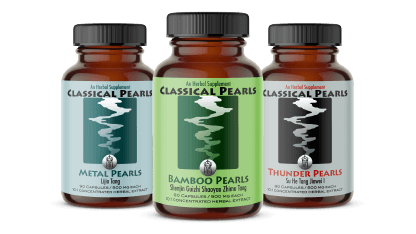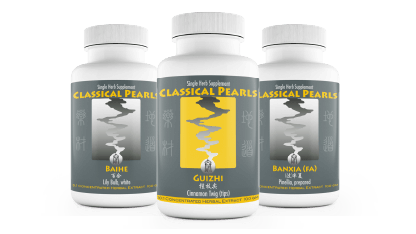About Guizhi Tang
Guizhi Tang is the cardinal formula in China’s first prescription manual, Treatise on Disorders Caused by Cold (Shanghan lun), and is therefore regarded as the “mother of all classical remedies”. Some sources assert that it originated long before the 2nd century when it was first mentioned in Zhang Zhongjing’s formula classic. Almost exclusively based on common foods and spices, the design of Guizhi Tang is a good example for the dietary origins of Chinese herbal therapy. Despite its concise design, the formula is extremely versatile, since it can boost microcirculation and immune function at the surface (Lung, skin, protective layer) and the interior (Spleen, Liver, nutritive layer) at the same time. From a clinical research perspective, the formula exhibits pronounced adaptogenic effects. In general, it is the safest and most cost-effective for the tonification, harmonization and circulation of yin and yang. In the herbal lineage of the Sichuan Fire Spirit School, Guizhi Tang is the foundation for one of two major treatment methods: Guizhi Fa (Cinnamon Method), the Fire Spirit principal Zheng Qin’an’s premier modality to move yang. While still mentioned in contemporary TCM herbalism as the standard remedy for taiyang wind invasion syndrome (the wind cold type of acute external pathology), the formula is best taken preventatively to avoid getting sick after a day of hard work in fall or winter. Guizhi Tang’s real forte in a modern clinical setting, moreover, is the recovery of chronic internal disorders associated with debilitated Small Intestine function and subsequent low immunity (most typically accompanied by an aversion to drafts and cold temperatures). The ancient food remedy Guizhi Tang thus represents an effective systemic approach to intestinal and urinary tract dysbiosis—instead of using expensive and artificially produced probiotics, this formula sustainably increases microcirculation in the villae of the small intestine and thus changes the overall terrain for the growth of healthy bacteria over time.
Therapeutic Principles
- Harmonize protective (wei) and nutritive (ying) qi
- Warm channels and collaterals
- “Release the surface” by increasing microcirculation in both the taiyang Bladder and taiyang Small Intestine networks
Formula Ingredients
| CHINESE | PINYIN | COMMON NAME; PAOZHI (PROCESSING) | AMOUNT |
| 桂枝 (尖) | Guizhi | Cinnamon twig | 20.94% |
| 白芍 | Baishao | Peony, white | 20.94% |
| 生薑 | Shengjiang | Ginger, fresh | 20.94% |
| 大棗 | Dazao | Jujube | 23.22% |
| 甘草 (棗花蜜炙) | Zhi Gancao | Licorice; jujube flower honey baked | 13.96% |
Guizhi Tang Usage
Companion Remedies
SUITABLE FOR COMBINING
Similar Remedies
ALSO CINNAMON BASED; ALTERNATION OPTIONS
Supplement Facts
- Serving size: 3 capsules
Servings per contains: 30
Amount per serving: 1500mg
*Proprietary blend containing pure herbal extracts of:
Ziziphus jujuba fruit (Dazao), Cinnamomum loureirii twig (Guizhi), Paeonia lactiflora root (Baishao), Zingiber officinale fresh rhizome (Shengjiang), Glycyrrhiza glabra root honey baked (Zhi Gancao)
* % Daily value not established
Other ingredients: living green clay excipient, vegetable capsule






